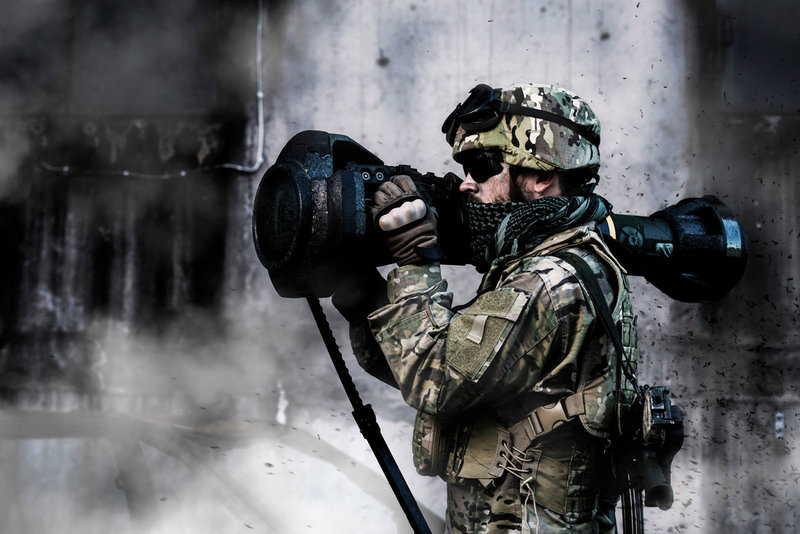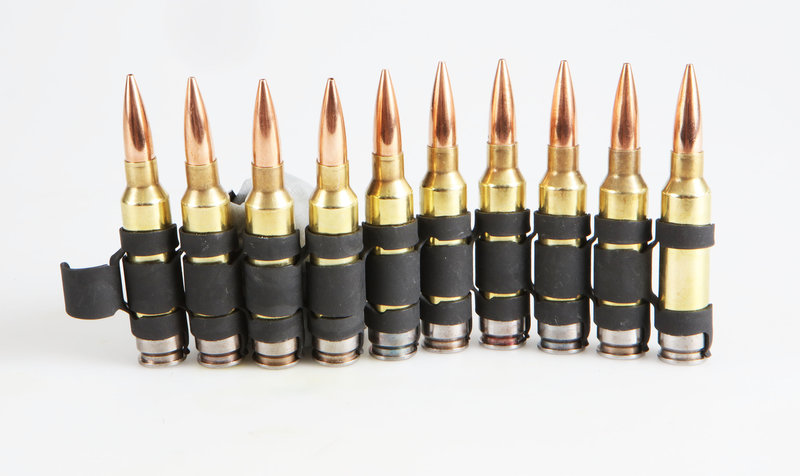army aviation
Lessons in lethality
Any new weapon systems that an army wants will add to the loads that its troops are already carrying on the battlefield and has to be given careful consideration. Tim Fish reports.
Efforts to improve the firepower of dismounted infantry units in the past have been slow and incremental, with the ability of individual soldiers to carry heavy equipment for long durations the primary limiting factor.
Soldier modernisation programmes have rarely delivered the kinds of step change in capability that have been touted. Plans for futuristic systems have often entailed too much risk or cost to develop leading to the curtailment and scaling back of many of these initiatives. However, recent combat experience gained by NATO troops in Afghanistan and the arrival of the so-called era of Great Power Competition means there is a renewed urgency to try and increase the offensive power of the infantry.
Mike McCarthy, deputy director of the Close Combat Lethality Task Force (CCLTF) in the US Office of the Secretary of Defense told Global Defence Technology that in the history of close combat formations, dismounted squads “make up about 4% of a total force but they experience about 90% of the casualties and there has hasn’t really been major breakthroughs in the way we can make them more lethal, more effective, more protected, more resilient”.
Outranged and outgunned
The challenges of weight remain but the demand to adopt more lethal weapons are increasing. The Russo-Ukraine War since March 2022 and the Nagorno-Karabakh conflict between Azerbaijan and Armenia in September-November 2020 have seen the use of drones and loitering munitions by frontline infantry units to extend the range of their targeting and attack capability. In Ukraine the use of Anti-Tank Guided Missiles (ATGMs) has been well publicised as one of the important weapons used by the Ukrainian Armed Forces to blunt the initial attack by the Russian Federation Armed Forces.
Earlier in Afghanistan, NATO infantry units often found themselves outgunned by opponents using longer-range rifles and weapons of a higher calibre. US Army reports found that standard NATO rifles using 5.56mm lacked the range and impact to respond leaving just those squad members with the larger 7.65mm support weapons able to engage. It means there are significant questions being raised about how new weapons and equipment can be afforded to the infantry without increasing their load excessively.
McCarthy said that its more than just doing a lot of physical training, “it’s diet, management of their physical strength and looking for lighter weight gear – soldiers carry a heavy load so how do we make it lighter?”
We want to be faster, inside any threat, or enemy decision cycle, the notion in being far more agile in that decision dominance
New systems means more training
But it is not just the weight of new equipment that is a factor. Ben Barry, senior land fellow at the International Institute for Strategic Studies told Global Defence Technology: “In theory you can give a [tactical] drone to every soldier, but that gives every soldier something else to do and something else to be trained in – he’s got to be an expert.”
Barry explained that drone operators need to how and when to deploy drones. For example, they need to know if other aircraft are in the area and if they are friendly or not, that drones should not be used in the same airspace when firing mortars, or when right time and place to use a drone is considering GPS jamming. “Using a drone from a mile away also means being able to relate the drone to the ground, learning how to use it requires training and expertise,” he added.
The evidence seen so far from Ukraine indicates that drones operations are performed by full time skilled operators. Therefore, for Barry one of the key questions is where new weapons and capabilities should be held, either at the squad, platoon, company or higher-level formations.
“A future military organisation will probably need dedicated teams of tactical drone operators and certainly dedicated loitering munitions operators, so where are these going to go? These assets can be held at the battalion level, maybe with a company or even attach them to a platoon or section – but you do need dedicated teams in my judgement,” Barry explained.
Despite the lessons from Nagorno-Karabakh and Ukraine it will still be a learning process about how to use these weapons at the operational level, especially in a Western military context.

// The UK has recently moved to acquire thousands of NLAW ATGMs to replace stocks donated to Ukraine at the outset of Kyiv’s defence of its territory. Credit: Saab
Any new weapons will have to be added alongside the existing inventories of ATGMs, mortars, machine guns and rifles as way of supressing the enemy. ATGMs are another important consideration because of the weight, size and bulk of these weapons.
“That poses difficulties at the squad and platoon level because a man carrying a [12kg] NLAW is going to be slower and less mobile than the other soldiers,” Barry said, “You want people that know how to use them and get the best from them because they are all one-shot weapons,” he added.
The question again arises about where these experts are held. Should there be squads of anti-tank operators being attached to platoon-sized units or held at company or even battalion level and distributed as necessary? Different armies will make different decisions.
“I think it's unrealistic to expect heavy AT weapons like NLAW to be carried by the same people who are engaging in close combat,” Barry said, “One of the important known-unknowns, on which there's been no commentary or reporting is ‘what is the character of dismounted close combat in Ukraine?’ There must be infantry versus infantry firefights going on and there's been a lot of use of anti-tank weapons on both sides.”
US Army plans lethality upgrade
In an attempt to increase soldier lethality and gain battlefield overmatch against GPC peer and near peer adversaries the US Army has decided to adopt new 6.8mm ammunition. Its Next Generation Squad Weapon (NGSW) project will partially replace the M4 and M249 weapons firing 5.56mm rounds. In April 2022 the Program Executive Office Soldier procurement team selected a solution from Sig Sauer that provides the SIG 6.8x51mm FURY hybrid brass and steel rounds along with the XM5 rifle and XM250 light machine gun.
Whilst the ammunition can sustain pressures of 80k psi, which can push the round faster and further the rounds are almost three times as heavy as a 5.56mm, which means fewer rounds carried per soldier.
Barry believes that less ammunition is a problem. He explained that being under enemy fire is never a pleasant experience and soldiers like to put rounds back in the direction of the enemy because it is reassuring and provides an important psychological effect. “I defy anyone to train ordinary soldiers not to do that,” he added.

// The FURY 6.8mm cartridge offers improved range and stopping power compared to more traditional NATO 5.56mm rounds. Credit: Sig Sauer
However, McCarthy said that it is a “training issue” and soldiers have to be trained to fight using the weapon. Whilst the 6.8mm cartridge is heavier McCarthy said that it also “has greater knockdown power so you don’t need to carry as many of them. It’s a trade-off: fewer cartridges, more accuracy, better lethality. You can cut the weight by reducing the number of cartridges they have to carry.”
He added: “Find your target, engage your target. Don’t just put a bunch of bullets out there and hope they will hit something.”
But for McCarthy lethality is about more than just weapons. Although the details are classified the CCLTF is working on several lines of effort related to soldier performance that includes making individuals healthier.
“We are looking at ways in the human dimension ow we can change diets so that soldiers are getting the right amount of calories at the right time continuously through the cycle of the day in battle. We are also looking at training issues, at innovative ways that other services and forces are training their soldiers to see if there is something we can do to give our soldiers the edge,” he explained.
// Main image: The US Army’s Its Next Generation Squad Weapon project will partially replace the M4 and M249 weapons firing 5.56mm rounds. Credit: Sig Sauer